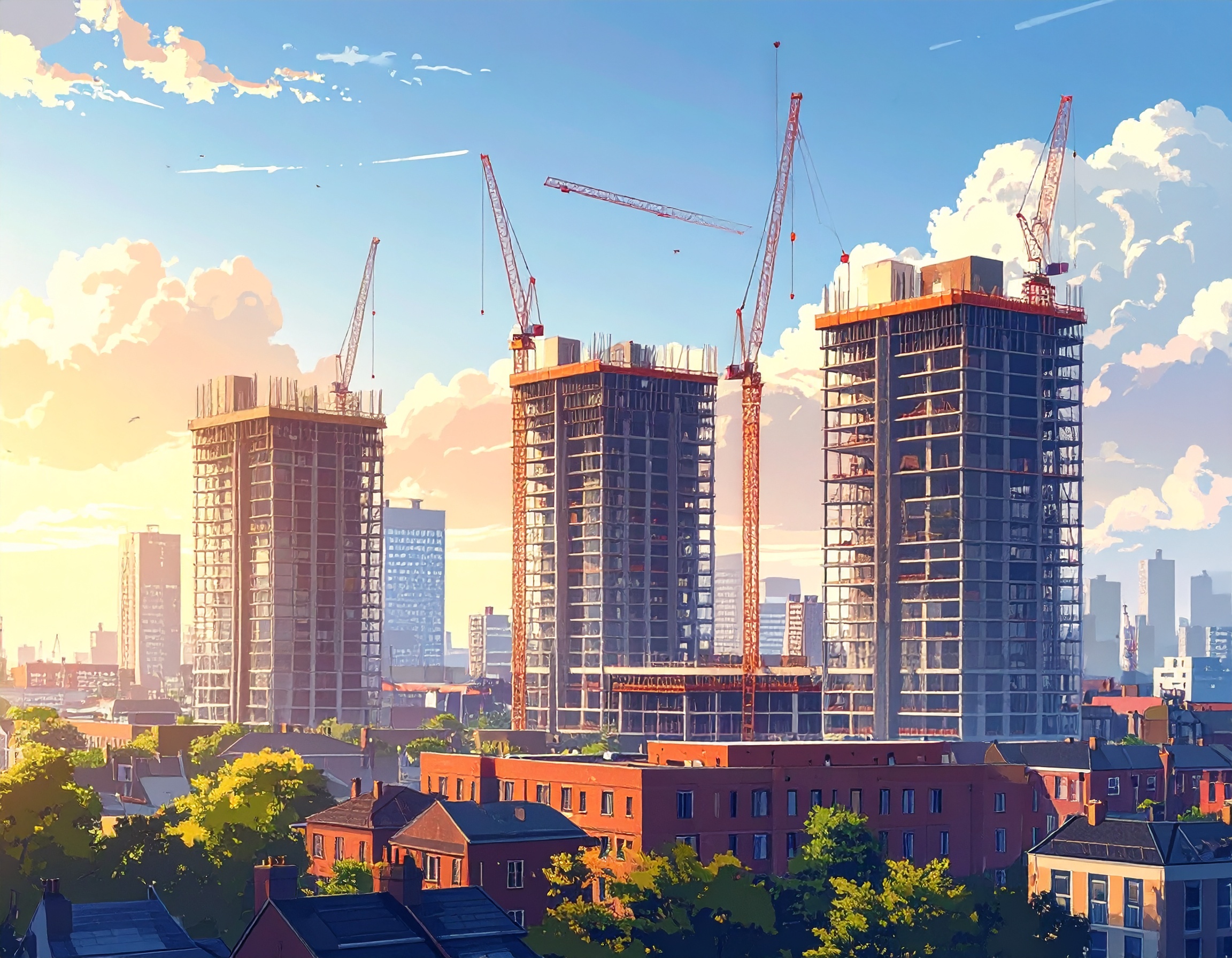High-Rise Approval Delays Threaten UK Housing Targets as Developers Warn of Growing Crisis

The UK government’s flagship pledge to deliver 1.5 million new homes in England by 2029 is at serious risk, as developers warn that mounting delays in high-rise building approvals are stalling construction across the country.
According to official figures, only 28,180 homes were started in the first quarter of 2025 — less than 10% of the annual target of 300,000. Real estate consultancy Savills forecasts that completions could reach just 840,000 homes by 2028/29, leaving the Labour government 42% short of its goal.
Industry leaders have attributed the slowdown to bottlenecks created by the Building Safety Regulator (BSR), which oversees a new multi-stage approval process for high-rise projects introduced after the Grenfell Tower tragedy in 2017.
“Failing to tackle these delays will significantly hinder the government’s housebuilding targets and the infrastructure needed to support them,” warned Gary Strong, Global Building Standards Director at the Royal Institution of Chartered Surveyors (RICS).
Building Safety Regime Creating Major Bottlenecks
The building safety regime, introduced in 2022, requires all high-rise developments to pass through three regulatory “Gateways” — covering planning, construction, and completion. Developers must submit fully detailed designs for Gateway 2, the construction phase, before work can begin.
While the framework is supported in principle, industry figures say the approval process has become a major choke point. Between January and March 2025, the BSR made just 257 Gateway 2 decisions out of 1,276 pending applications. Average approval times now exceed 36 weeks.
The delays are particularly acute in London, where less than half of the 2,148 homes started in the first half of 2025 were in buildings over 18 metres tall — compared to 71% in 2019, before the new regulations took effect.
Developers have criticised the system for ambiguous guidance, inconsistent requirements, and staff shortages within the BSR, which relies heavily on outsourced technical teams.
“The regulatory framework is not conducive to delivery,” said Mark Reynolds, Executive Chair of Mace Group, at a parliamentary inquiry in July. “The level of detail required at Gateway 2 is beyond what’s realistic. The industry is saying this is a crisis today — we need to make the system work.”
Government Promises Reform — Industry Urges Urgency
In response to growing concern, the government announced in June a package of reforms to ease the backlog, including leadership changes, new funding, increased staffing, and a fast-track process for new build reviews.
A spokesperson for the Ministry of Housing, Communities and Local Government said:
“The Building Safety Regulator plays a crucial role in keeping residents safe. To meet our ambition of 1.5 million homes, we’re taking decisive action to build a stronger, faster system that works for the sector and ensures public safety.”
However, developers argue that the reforms do not go far enough.
“Everyone supports safer buildings, but a drastic overhaul is required,” said Rebecca Taylor, Managing Director of Long Harbour. “We need a more staged approval process to get spades in the ground sooner — delays at Gateway 2 are undermining investor confidence.”
RICS Board Chair Martin Samworth added that requiring such detailed plans so early in the process places financial strain on developers before funding is secured. Others have called for “account management by organisation”, allowing multiple applications from large developers to be handled together to prevent future gridlock.
“Confidence and clarity are key,” said one senior housebuilding executive. “Without a faster, clearer process, projects will keep being paused — and Britain’s housing ambitions will remain out of reach.”

